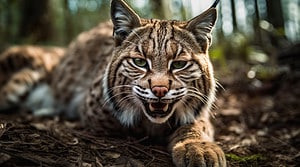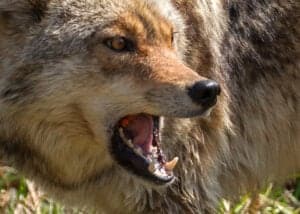Bobcats are at least double the size of your average house cat, but have you ever wondered how they’d measure up to Fido? It can be difficult to guess whether they would see eye to eye without having them beside each other.
That’s why we’ve created this complete bobcat size comparison so you can learn how big these wildcats are compared to dogs, foxes, wolves, and even you!
Types of Bobcats and Their Sizes
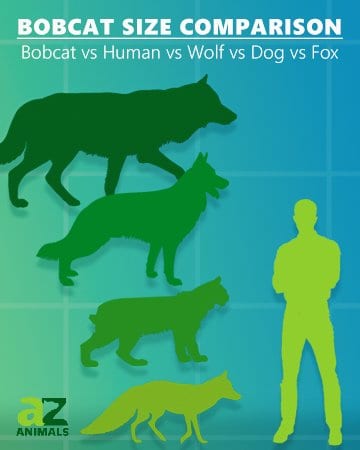
Bobcats, whose scientific name is Lynx rufus, can be found in a large range of ecosystems across North America, from the cold climates of Canada to the torrid deserts of Mexico. With a range like that, they’ve evolved into many subspecies fit to survive.
These include the following subspecies, all of which begin with Lynx rufus (such as Lync rufus Baileyi, which is one subspecies):
- Californicus
- Escuinapae
- Fasciatus
- Floridanus
- Gigas
- Oaxacensis
- Pallescens
- Peninsularis
- Rufus
- Superiorensis
- Texensis
While there are many different names for the bobcat, there are few physical differences between them. Though they may come in different shades, all bobcats share the tell-tale (or should we say, tell-tail) bobbed tail.
They also all tend to share a relatively similar size, with male bobcats typically growing larger than their female counterparts. Male bobcats can weigh anywhere from 18 to 35 pounds and can grow to be up to 37 inches in length from nose to tail. Female bobcats on the other hand don’t grow much heavier than 30 pounds or longer than 32 inches.
But how does their size compare to humans or some of our favorite canines?
Bobcat Vs. Human Size Comparison
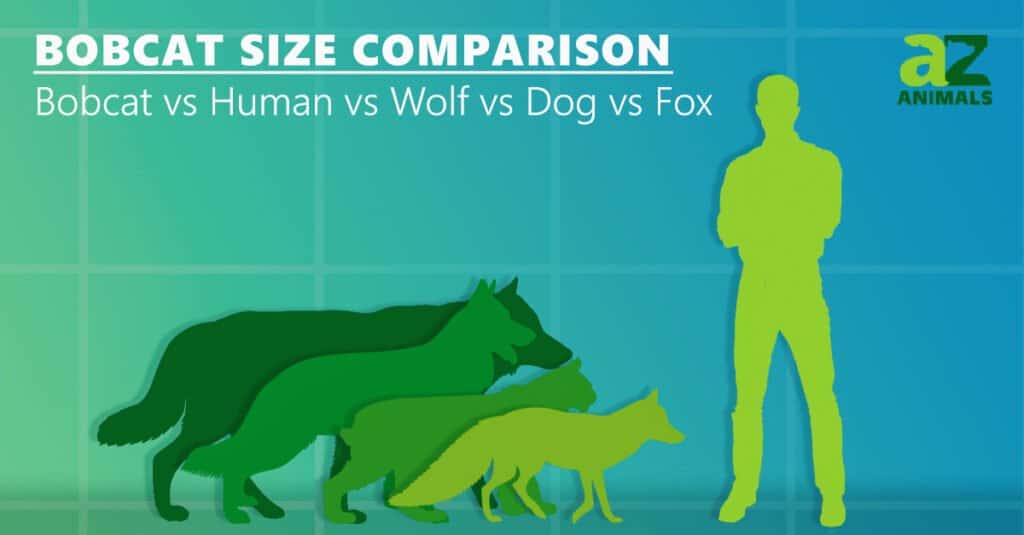
Despite being a top predator, a bobcat probably wouldn’t seem too intimidating if you were to stumble across one in the woods. After all, they probably wouldn’t be any taller than your knee – and that’s at their maximum height!
However, it can be difficult to determine just how big a bobcat is when you’re looking at its size from nose to tail. To create a better bobcat size comparison to a human, imagine lifting one onto their hind legs – then they’d only be as tall as a two-year-old!
Bobcats also weigh around the same as the average human two-year-old.
Bobcat Size Comparison to a Wolf
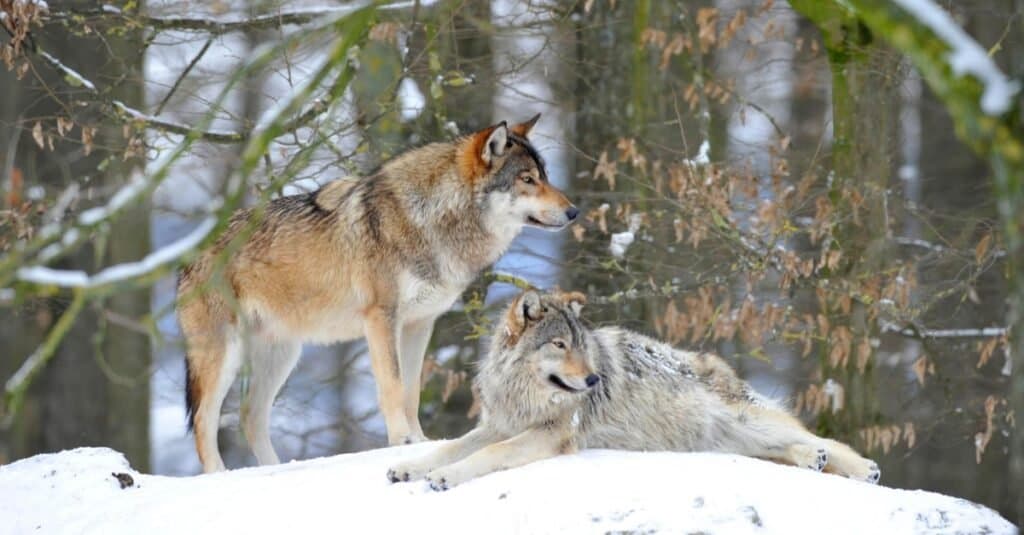
Mackenzie Valley wolves are the largest type of wolf.
©imageBROKER.com/Shutterstock.com
When it comes to a bobcat size comparison to a wolf, we won’t be seeing these two top predators see eye to eye anytime soon.
The largest wolf is the Mackenzie Valley wolf, which can grow up to 34 inches from ground to shoulder and has been known to weigh up to 175 pounds. This means that it would take several of the heaviest bobcats to weigh the same as one full-grown Mackenzie Valley wolf.
And, since adult bobcats usually only grow to a maximum shoulder height of 24 inches, bobcats are about two iPhones shorter than the wolf.
However, one of the smallest wolf species is the Arabian wolf. These wolves, which are easily mistaken for a coyote due to their petite size, only grow to a maximum shoulder height of 26 inches and won’t get much heavier than 45 pounds. As a result, while they’re still bigger than the bobcat, they’re much more evenly matched.
Bobcat Size Comparison to a Dog
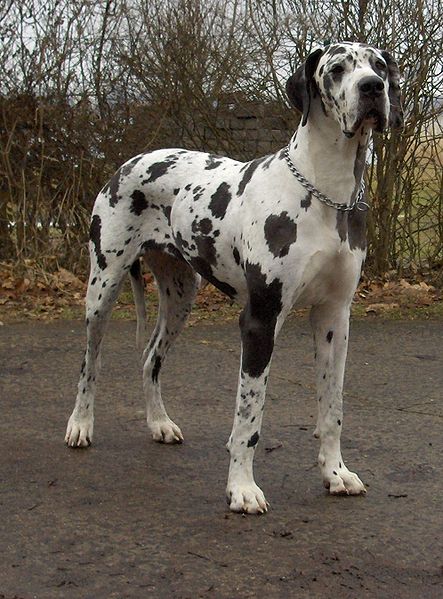
Great Danes are one of the largest dog breeds and hold many records for “largest dog alive”.
©Viborg / Creative Commons – Original
With so many breeds of dogs available, it can be hard to see just how big a bobcat is compared to them. To make it easier to get a grasp of a bobcat’s size, we’ll compare them to the largest dog breed (the Great Dane) and the smallest breed (the Chihuahua).
While some of the largest Great Danes ever have been several feet tall, the average male only grows to a shoulder height of about 34 inches – just a little less than 3 feet. However, they can weigh up to an upper average of 200 pounds, with many of these giant dogs being recorded weighing even more.
As a result, bobcats may appear more like chew toys than apex predators to these gentle giants.
Great Danes aren’t too far off from humans, especially younger kids. As a result, it’s expected that a bobcat would probably come up to around the Great Dane’s chest – unless we’re dealing with a record-breaking Dane like Titan.
However, the tables might turn when it comes to the Chihuahua. Chihuahuas tend to only grow to about 10 inches tall, and you don’t need to worry about these lapdogs getting much heavier than about 6 pounds. This means that a Chihuahua will look to a bobcat much like a bobcat will look to a Great Dane!
In fact, it would take about three Chihuahuas stacked on top of each other to reach the same height as a bobcat. And when it comes to balancing the scale? You’ll need around 8 heavy Chihuahuas to reach the same weight as some of the smallest bobcats.
Bobcat Size Comparison to a Fox
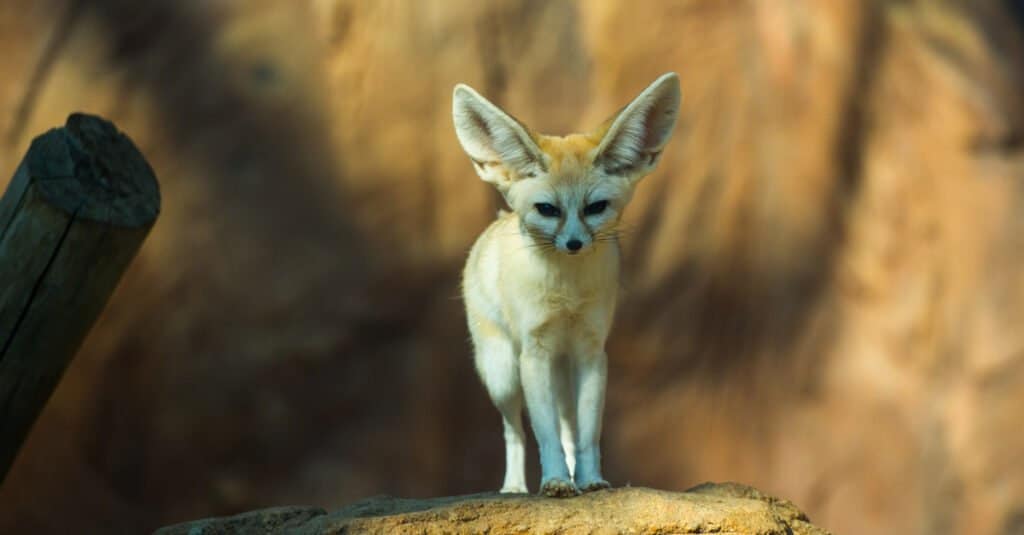
Fennec foxes are the smallest type of fox. It can take 8 fennec foxes to weigh the same as one bobcat.
©DONGSEUN YANG/Shutterstock.com
While canines seem to have a tendency to outdo bobcats in terms of size, the narrative changes with foxes. This is especially since bobcats are fox predators!
North America is home to a diversity of foxes, though the most common is the average red fox. These are the ones you may be most familiar with as well, with their iconic fluffy red and whitetails. With a shoulder height of 20 inches, foxes tend to come to around a human’s midcalf. This makes them a few inches smaller than the bobcat – around a credit card shorter to be exact.
However, despite their height differences, foxes and bobcats are seemingly closely matched when it comes to weight. After all, the red fox weighs an average of around 30 pounds, the same as bobcats.
The smallest fox species, though, is the fennec fox. These can-size canines only grow to around 8 inches tall and weigh about 4 pounds. This makes them the perfect snack for a bobcat, who is nearly 8 times heavier and 4 times taller.
Not sure just how big the bobcat is compared to the fennec fox? Think of a bottle of ketchup versus two bowling balls.

Bobcats are carnivores and skilled hunters.
©gobirdnerds/Shutterstock.com
Hunting and Diet
Bobcats are known for being able to survive for long periods of time without food but when prey is available, they will eat heavily. Bobcat hunts by stalking their prey and then ambushing them by pouncing. They prefer small mammals weighing between a pound and 12 pounds. The bobcats usually preferred to prey on eastern cottontail.
The bobcat is an opportunistic predator meaning that will eat what it can find when it can find it. Unlike the Canada Lynx, the bobcat isn’t a picky eater. The bobcat hunts prey of different sizes and adjusts its hunting styles to match the prey.
Bobcats have additionally been known to kill pronghorn or deer and sometimes even hunt elk in the winter.
Bonus: Do Bobcats Prey on Pets?
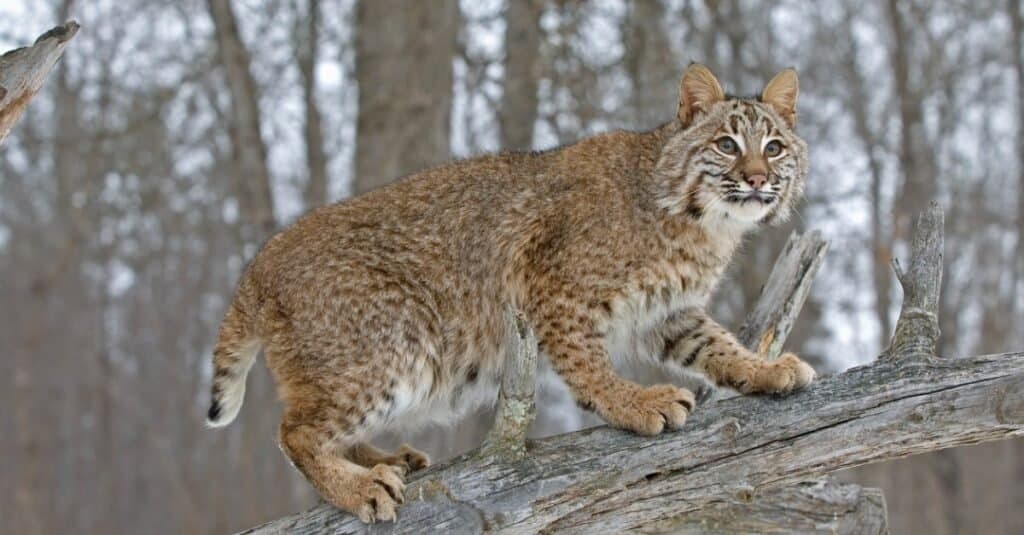
Bobcats will eat anything they can bring down – including small pets.
©iStock.com/JohnPitcher
After comparing the size of a bobcat to dogs, foxes and wolves – you may forget that these pet-sized felines will prey on smaller pets if given the chance! While attacks on pets aren’t common they are increasing in frequency as humans continue to encroach on their native habitats. Bobcats are highly adaptive – which is a major reason for their success as a species. If people move into their territory – they will adapt – perhaps finding small dogs and domestic cats to be easy new prey.
Small dogs left in fenced backyards are easy game for these agile predators. They can jump or climb a fence with minimal effort and are powerful animals. Pet cats that roam outside would also be easy targets for experienced hunters. Farm animals like goats and chickens are also at risk. If you suspect a bobcat is in your neighborhood, keep your cats inside and don’t leave small dogs outside alone. Goats and chickens can be protected by trained guard dogs.
Thank you for reading! Have some feedback for us? Contact the AZ Animals editorial team.






